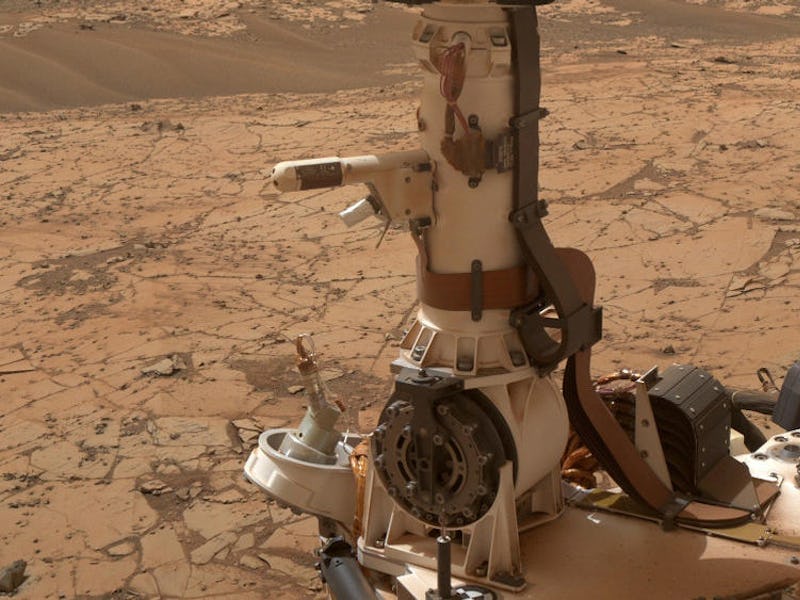Scientists Find 4-Billion-Year-Old Fossil Riverbeds on Mars
Mars could have been a whole lot more tropical back then.

Evidence is mounting that early Mars was warm and wet — and potentially habitable for alien life.
A study published Tuesday in Geology found an extensive network of ancient river beds in a region of the Red Planet where no evidence of fluvial activity had been previously found. The new data helps bring observations in line with climate models that assume ancient Mars had a healthy water system.
The researchers focused on an area called Arabia Terra, which is about the size of Brazil. There, they documented more than 10,000 miles of raised channels braiding through the landscape, which they say indicate the former presence of a network of large rivers. These were found thanks to much higher resolution images than what had previously been available — from more than 300 feet per pixel down to about 20 feet per pixel.
Photos from the Mars Reconnaissance Orbiter Context Camera show evidence of ancient rivers and lakes.
Inverted channels are formed when material deposited at the bottom of riverbed becomes harder than rocks in the surrounding landscape. After the water dries up, erosion carves away the surrounding landscape, but the river bed itself remains and becomes an elevated ridge. These geological formations exist on Earth, too, particularly in desert areas where rivers once flowed.
Here on Earth, you find life forms pretty much anywhere you find liquid water. So the question remains: Did life ever take hold on our neighboring planet? Given that there’s still liquid, flowing water on Mars, could there be life out there still today? It’s a fascinating possibility, and you can bet space agencies around the world are itching to answer it.
One of Mars’s inverted channels, named Aram Dorsum, is a candidate landing site for the European Space Agency’s ExoMars Rover mission, set to launch in 2020. It’s impossible to say what will be found when we get an even clearer picture of the Red Planet, but you can bet it will be worth the wait.